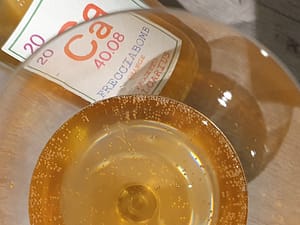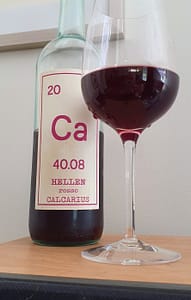
Brawn, on the corner of Columbia Rd.
This was my third visit at Brawn. First time was three years ago when my wife and I had first visited the RAWfair and the nearby flower market. By that time Brawn was taking pride in serving all parts of the pig. Now it seemed that the kitchen had moved on to a more diverse fare. This was confirmed by the staff, that said it was partly to be in tune with the times and many people’s wish to go for lighter menues. While I loved the former concept, that I in fact had come back for, I also appreciate the new approach. And with an equally eclectic wine selection as before: organic wines, as naturally made as possible, but with no fundamentalism either – yes, I can say that I have the strongest faith in the project. I am a bit worried that the swine in the logo could be an endangered species though.

This eastern oasis (near Bethnal Green) could be called a classic. The kitchen puts out wonderful dishes with the strongest confidence, the menu is written in an original language, and the wines are of the versatile type. I will not dwell too much with the food, since this is primarily a wine site. But I must mention that at my latest visit I had salted padron peppers, then a tomato salad with red onions and basil, and then a marvellous black pudding with a thin, crispy crust with maize and mushroom. And by the time I reached this dish Maceo Parker’s funky sax came very appropriately through the speakers. The dessert was dark chocolate in olive oil and sea salt.

Peppers with Pink Bulles sparkling and black pudding with a Puglia primitivo

The wine list contains some 500 wines, all suiteable for drinking now or in the near future. No show-offs. There is a selection of around 20 wines (and some beers and ciders) by the glass, but when I look at my notes after each visit I see that some of the wines suggested by the staff has come from the main list, which is another “plus”.
With the padron peppers I had an unfiltered gamay pét nat from Auvergne (in Upper Loire, west from Beaujolais), the Pink Bulles 2015 (Jean Maupertuis), that was lightly blushing pink with an orange hint, had a delicate aroma of yellow apple, peach, and was light and fresh in the mouth. With the tomatoes came the Supernova 2015 (Danjou-Banessy) a Mediterranean muscat from Roussillon. This had some traces of extended skin-contact, with a yellow-orange colour and some notes of peel in the aroma. Quite round and soft with moderate acidity, but the dry texture from the skin-contact adds to the balance. Third wine: Lamie delle Vigne 2014 (Cristiano Guttarolo), a Puglia primitivo, that came with the black pudding. Very dark, young colour, aroma of berries from the wood, some blueberry, and in the mouth it was round and tasty. It can also be noted that it has some volatile acidity, which I think is ok in small quantities, and in a southern, warm wine like this it actually adds to the freshness.

Pierre-Yves and Wesley at Brawn
I was also given a taste of their Guigne et Guins 2014, a wild cherry liqeur from the Laurent Cazottes destillery (with whom they collaborate, if I remember right), quite light at 18% of alcohol, fruity and not too sweet.

With this dessert I chose a Maury, the Fagayra Rouge 2012 (Les Terres de Fagayra), a grenache-based dessert wine with hints of sweet black cherries.

To sum up, this is that kind of place where I like to go myself, a cosy, not too formal place with focus on wine, but with a really good kitchen to match it. In a place like this I could have said that I am just a little-medium-very hungry, and let the staff bring me wines and food of their own choice. Go there you too!













